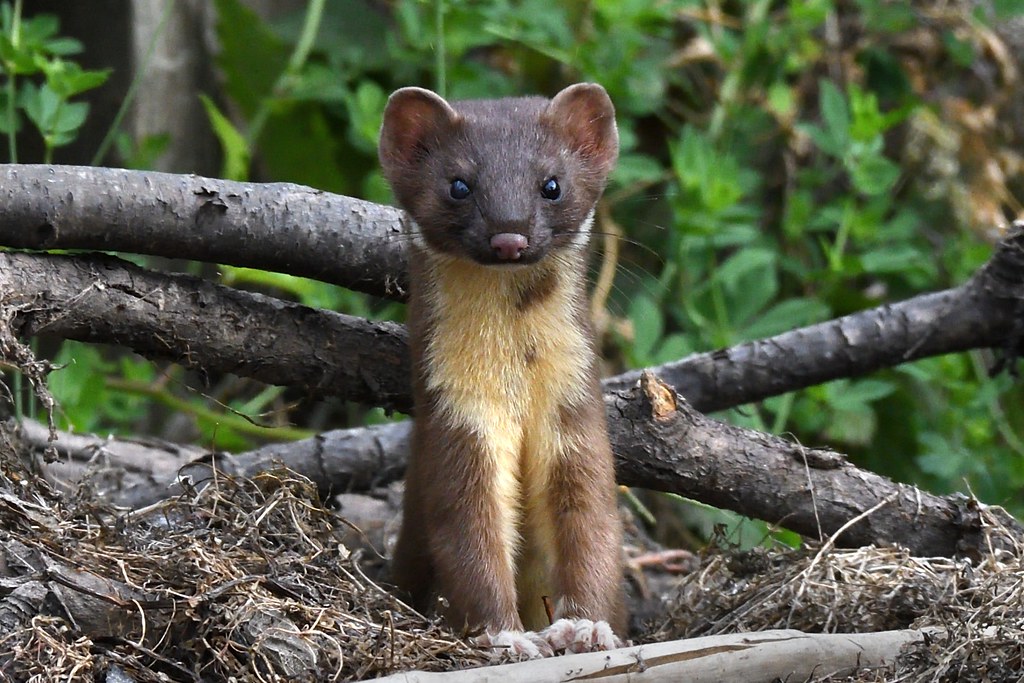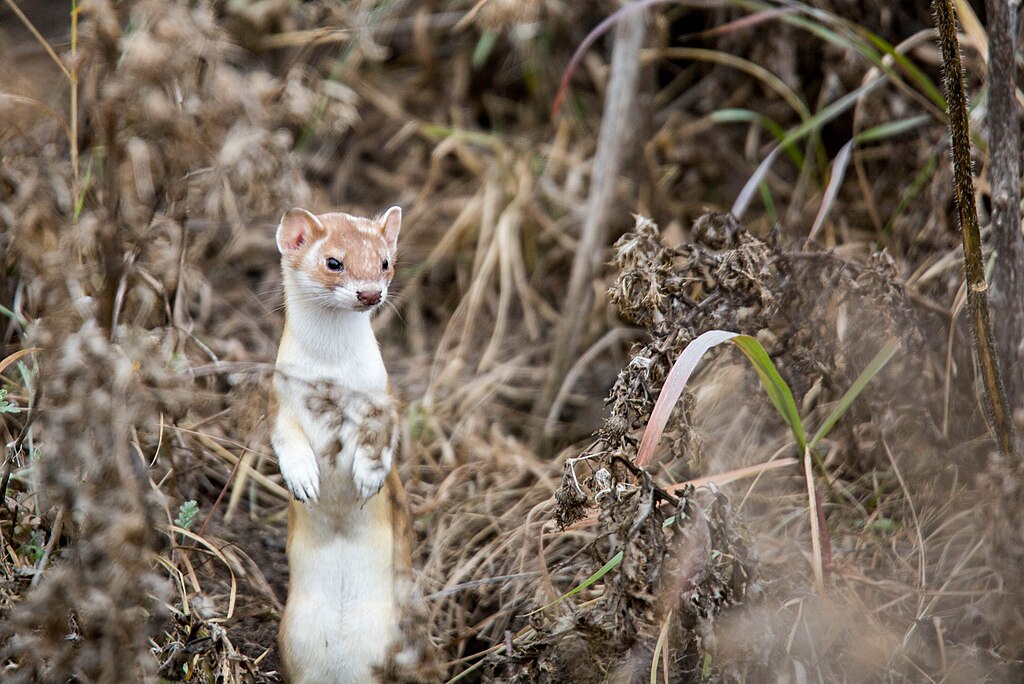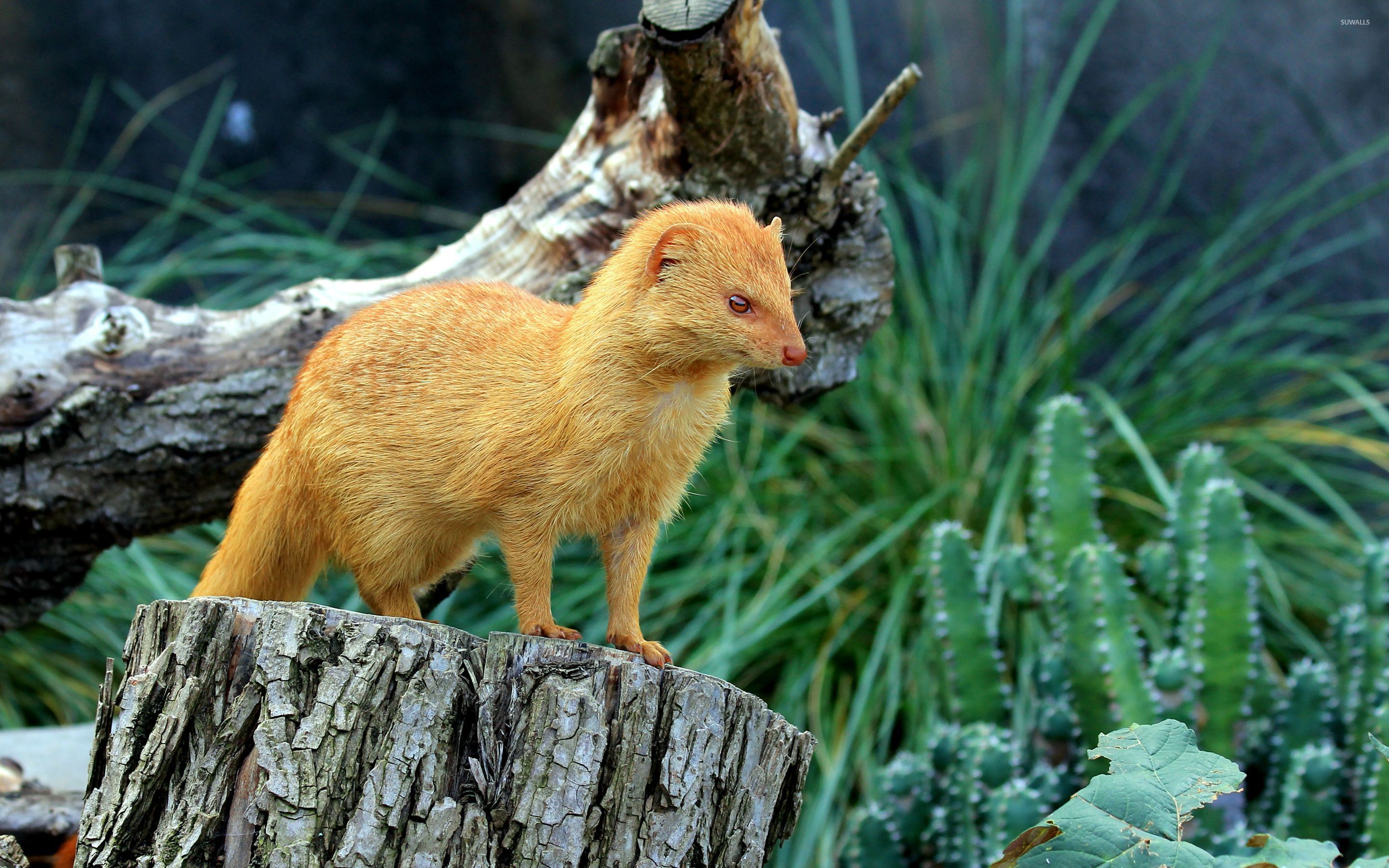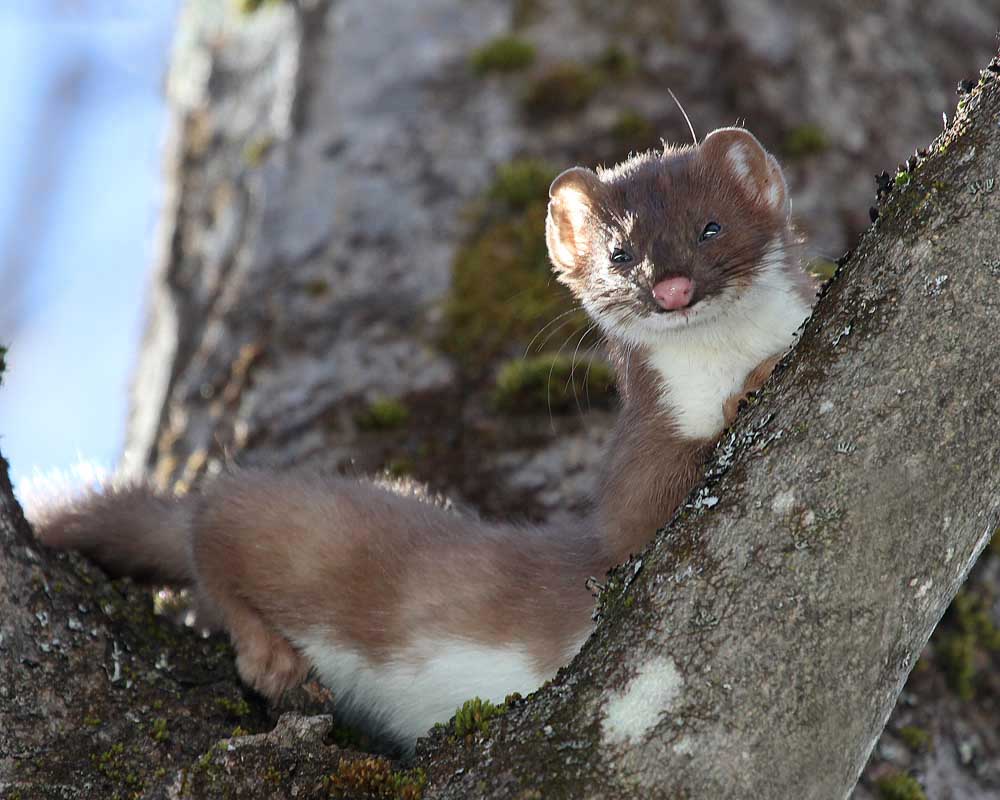Evolution

The long-tailed weasel is the product of a process begun 5–7 million years ago, when northern forests were replaced by open grassland, thus prompting an explosive evolution of small, burrowing rodents. The long-tailed weasel's ancestors were larger than the current form, and underwent a reduction in size to exploit the new food source. The long-tailed weasel arose in North America 2 million years ago, shortly before the stoat evolved as its mirror image in Eurasia. The species thrived during the Ice Age, as its small size and long body allowed it to easily operate beneath snow, as well as hunt in burrows. The long-tailed weasel and the stoat remained separated until half a million years ago, when falling sea levels exposed the Bering land bridge, thus allowing the stoat to cross into North America. However, unlike the latter species, the long-tailed weasel never crossed the land bridge, and did not spread into Eurasia.[2]
In winter coat
Description

The long-tailed weasel is one of the larger members of the genus Mustela in North America. There is substantial disagreement both on the upper end of their size and difference in size by sex by source: one indicates a body length of 300–350 mm (12–14 in) and a tail comprising 40–70% of the head and body length. It adds that in most populations, females are 10–15% smaller than males,[3] thus making them about the same size as large male stoats, according to a second source.[4] A third states they range from 11 to 22 inches (280–560 mm) in length, with the tail measuring an additional 3 to 6 inches (80–150 mm). It maintains the long-tailed weasel weighs between 3 and 9 ounces (85-267 g) with males being about twice as large as the females.[5]
The eyes are black in daylight, but glow bright emerald green when caught in a spotlight at night.[6] The dorsal fur is brown in summer, while the underparts are whitish and tinged with yellowish or buffy brown from the chin to the inguinal region. The tail has a distinct black tip. Long-tailed weasels in Florida and the southwestern US may have facial markings of a white or yellowish colour. In northern areas in winter, the long-tailed weasel's fur becomes white, sometimes with yellow tints, but the tail retains its black tip.[3] The long-tailed weasel moults twice annually, once in autumn (October to mid-November) and once in spring (March–April). Each moult takes about 3–4 weeks and is governed by day length and mediated by the pituitary gland. Unlike the stoat, whose soles are thickly furred all year, the long-tailed weasel's soles are naked in summer.[4] The long-tailed weasel has well-developed anal scent glands, which produce a strong and musky odour. Unlike skunks, which spray their musk, the long-tailed weasel drags and rubs its body over surfaces in order to leave the scent,[7] to mark their territory and, when startled or threatened, to discourage predators.[8]
Behaviour
Reproduction and development

The long-tailed weasel mates in July–August, with implantation of the fertilized egg on the uterine wall being delayed until about March. The gestation period lasts 10 months, with actual embryonic development taking place only during the last four weeks of this period, an adaptation to timing births for spring, when small mammals are abundant. Litter size generally consists of 5–8 kits, which are born in April–May. The kits are born partially naked, blind and weighing 3 grams, about the same weight of a hummingbird. The long-tailed weasel's growth rate is rapid, as by the age of three weeks, the kits are well furred, can crawl outside the nest and eat meat. At this time, the kits weigh 21–27 grams. At five weeks of age, the kit's eyes open, and the young become physically active and vocal. Weaning begins at this stage, with the kits emerging from the nest and accompanying the mother in hunting trips a week later. The kits are fully grown by autumn, at which time the family disbands. The females are able to breed at 3–4 months of age, while males become sexually mature at 15–18 months.[7]
Denning and sheltering behaviour
The long-tailed weasel dens in ground burrows, under stumps or beneath rock piles. It usually does not dig its own burrows, but commonly uses abandoned chipmunk holes. The 22–30 cm (8.7–11.8 in) diameter nest chamber is situated around 60 cm (24 in) from the burrow entrance, and is lined with straw and the fur of prey.[7]Diet
Long-tailed weasel in winter fur attacking a quail, as illustrated in Popular Science Monthly
Long-tailed weasel with rodent prey in Box Elder County, Utah
The long-tailed weasel is an obligate carnivore which prefers its prey to be fresh or alive, eating only the carrion stored within its burrows. Rodents are almost exclusively taken when they are available. Its primary prey consists of mice, rats, squirrels, chipmunks, shrews, moles and rabbits. Occasionally, it may eat small birds, bird eggs, reptiles, amphibians, fish, earthworms and some insects. The species has also been observed to take bats from nursery colonies. It occasionally surplus kills, usually in spring when the kits are being fed, and again in autumn. Some of the surplus kills may be cached, but are usually left uneaten. Kits in captivity eat from ¼–½ of their body weight in 24 hours, while adults eat only one fifth to one third. After killing its prey, the long-tailed weasel laps up the blood, but does not suck it, as is popularly believed. With small prey, also the fur, feathers, flesh and bones are consumed, but only some flesh is eaten from large prey. When stealing eggs, the long-tailed weasel removes each egg from its nest one at a time, then carries it in its mouth to a safe location where it bites off the top and licks out the contents or if they have babies in the den they may hold it in their mouth all the way back to them.[9]
Subspecies
Mustela frenata
Lichtenstein, 1831







No comments:
Post a Comment
Note: Only a member of this blog may post a comment.